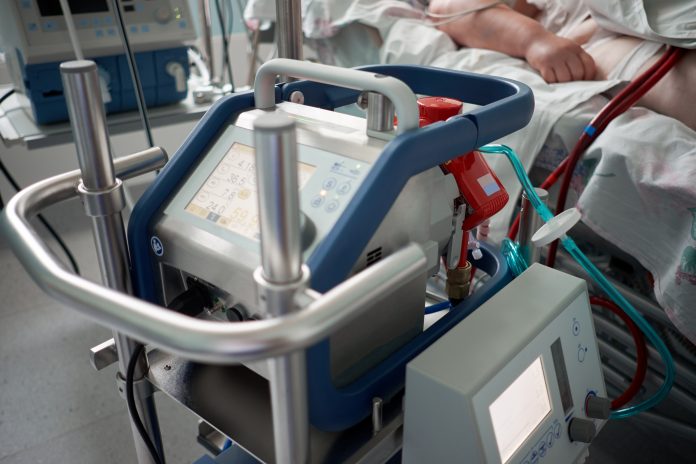Higher mortality has been found in patients with COVID-19 who did not receive ECMO (extracorporeal membrane oxygenation) – despite many having no health complications
An ECMO is a life support machine for those with severe and life-threatening illnesses which stops the effective functioning of their heart or lungs.
ECMO is used during life-threatening conditions such as severe lung damage from infection, or shock after a massive heart attack, but was frequently used during COVID-19 also.
Patients with COVID-19 who qualified for, but did not receive, ECMO treatment – due to shortages of resources – had higher rates of deaths despite many patients being young or having no other health complications.
Encouraging hospitals to provide ECMO to more patients
The study, published in the American Journal of Respiratory and Critical Care Medicine, evaluated the total number of patients referred for ECMO in one referral region between January and August of 2021.
From this analysis, researchers found that roughly 90% of patients for whom health system capacity to provide ECMO was unavailable died in the hospital, compared to 43% mortality for patients who received ECMO, despite both groups having young age and having limited health complications or pre-existing conditions.
How it happened was once a patient was determined to be medically eligible to receive ECMO, a separate assessment was executed of the health system’s resources to see if the hospital could provide ECMO.
However, when the health system resources – such as equipment, personnel and intensive care unit beds – were not available, the patient was not transferred to an ECMO centre and did not receive ECMO, worsening their chances of survival.
Amongst 240 patients with COVID-19 who were referred for ECMO, 90 patients (37.5%) were determined to be medically eligible to receive ECMO and were included in the study. The median age was 40 years and 25 (27.8%) were female.
Co-author Whitney D. Gannon said: “Even when saving ECMO for the youngest, healthiest and sickest patients, we could only provide it to a fraction of patients who qualified for it. I hope these data encourage hospitals and federal authorities to invest in the capacity to provide ECMO to more patients.”
Providing ECMO to just two patients will save a life
For 35 patients (38.9%), the health system capacity to provide ECMO at a specialised centre was available, but for 55 patients (61.1%), the health system capacity to provide ECMO at a specialised centre was unavailable.
Due to this lack of resource and the disparities in who accessed appropriate care, death before hospital discharge occurred in 15 of the 35 patients (42.9%) who received ECMO, compared with 49 of the 55 patients (89.1%) who did not receive ECMO.
Overall, the risk of death for patients who received ECMO at a specialised centre was approximately half of those who did not.
Co-author Matthew Semler, MD, assistant professor of Medicine at VUMC, added: “Throughout the pandemic, it has been challenging for many outside of medicine to see the real-world impact of hospitals being ‘strained’ or ‘overwhelmed’.
“This article helps make those effects tangible. When the number of patients with COVID-19 exceeds hospital resources, young, healthy Americans die who otherwise would have lived.”
Senior author Jonathan Casey, MD, assistant professor of Medicine at VUMC, finalised: “Because some patients die despite receiving ECMO, there has been debate about how much benefit it provides.
“This study shows the answer is a huge benefit. This data suggests that, on average, providing ECMO to two patients will save a life and give a young person the potential to live for decades.”











